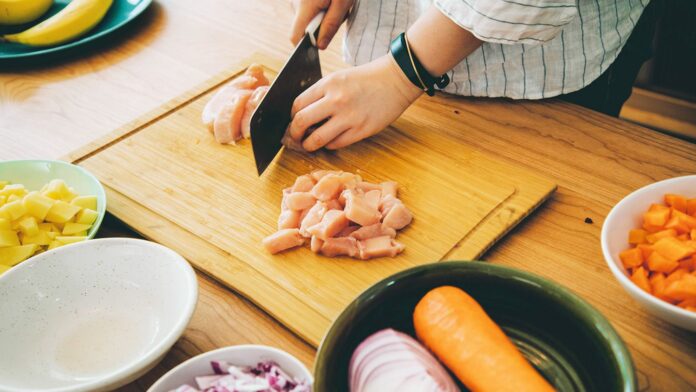Whether you’re working in a commercial kitchen or simply cooking food at home, it’s important to understand the risks involved. Cooking is something that people have been doing for thousands of years, helping us to enjoy our food and digest it properly. It can lead to wonderful recipes and exciting culinary experiences, but cooking is also an important stage in the food production process to help prevent contamination and illnesses such as food poisoning.
Many foods that we eat, such as meat, need to be prepared correctly to prevent the risk of illness. It’s vital that cooks understand the risks and manage the temperature to cook the food thoroughly. In this article, we’ll share some of the risks of improperly cooked food and how tools such as a temperature gauge can be used to make cooking so much safer.
Cooking Risks
When preparing food, there are a lot of different risks to consider. Cooking itself can be dangerous, especially when using sharp knives and hot materials. However, one of the main risks that cooks must train to recognise is in badly prepared food leading to contamination. Food needs to be stored and cooked correctly to help eliminate the risk of bacteria growth, as many bacteria can cause serious illnesses.
Food poisoning is a potentially serious condition which is spread by poor hygiene and badly prepared food, leading to the growth of toxic bacteria within the body. Food borne pathogens such as salmonella and e coli are particularly dangerous, potentially causing death if ingested. These pathogens are often present in a lot of foods, though they’re harmless unless allowed to grow through improper storage. Cooking can destroy bacteria, but only if specific temperatures are reached.
Food borne illnesses can affect anyone, but the effects may be more serious to those who are particularly old, young or already weak due to other conditions. Care should always be taken to reduce the risk of illnesses, especially when cooking for other people. Ensure that you always store and cook food correctly, and keep track of how long your food has been refrigerated to reduce the risk of eating spoiled food.
In case of food poisoning, activated charcoal for food poisoning may be recommended as a supplement to help absorb toxins in the gastrointestinal tract and alleviate symptoms.
The Temperature Danger Zone
When preparing food, cooks must recognise the temperature danger zone. The danger zone is the temperature range in which bacteria is able to grow and this is typically between 4 and 60°C. Within this range, the number of bacteria is able to double in just 20 minutes. As a result, this can quickly lead to a serious problem if food is stored in the danger zone. However, temperatures higher or lower than this range will either kill bacteria or limit its growth, preventing it from causing issues.
Although nonperishable foods such as dry food or cans can be stored at room temperature, others are susceptible to bacteria growth when left out for too long. Perishable foods such as meat should always be frozen or refrigerated. It’s important to note that refrigeration isn’t enough to stop bacteria growth, only to slow it.
Cooking is required for many food types to kill off the bacteria within. Some foods, such as poultry and eggs, are more susceptible to pathogens such as salmonella. In these cases, extra care needs to be taken to ensure that the correct temperatures are reached during the cooking process.
Many modern kitchens use temperature controls for cooking, enabling the cook to set a specific temperature. However, it’s also possible to use tools such as temperature probes. These can be used to check the internal temperature of the food while it’s cooking, ensuring that it reaches the correct measurement.
